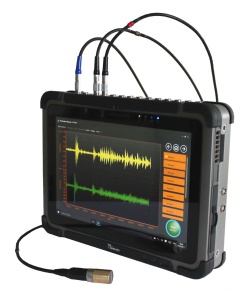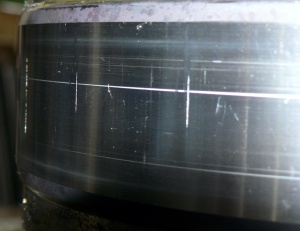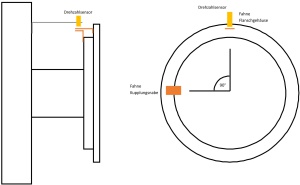-
Entry date 24.07.2025
Condition monitoring at HUSUM WIND 2025

-
Entry date 16.07.2025
Condition monitoring saves system operators a lot of money

-
Entry date 27.01.2025
Drum coupling monitoring - Automatic condition monitoring on cranes

-
Entry date 18.10.2024
Condition Monitoring and Artificial Intelligence

-
Entry date 15.12.2023
Condition monitoring at maintenance Dortmund on February 21st and 22nd, 2024

Blade Bearings of Wind Turbines
Blade bearings connect the root of the rotor blades of wind turbines connected to the hub. They carry very large alternating loads while rolling movements between the rolling elements and bearing rings is comparatively low. Often the wear of the running surfaces of blade bearings is not noticed immediately and cannot be detected by classical vibration diagnostic methods.
In practice, the state of blade bearings is determined mostly by grease samples or after dis-mantling. GfM has developed a method of diagnosis of slow-speed drives which also permits the evaluation of the blade bearings. The data acquisition is performed with sensors in the vicinity of the blade bearings. For the measurement, the rotor blade is rotated to the maxi-mum possible deflection. The measurement results allow the assessment of local bearing damage on the inner ring, outer ring and rolling elements, as far as vibrations arise.
Process of Blade Bearing Diagnosis
- On the hub several displacement sensors and a speed sensor are applied.
- For the measurement, the blade must be at a standstill in the 0 ° -, 120 ° - and 240 ° position are pitched at 90 °.
- Data are collected with the PeakStore.
- The instrumentation is mounted in the hub and remote controlled via radio. The measuring process takes about 4 hours.
- The evaluation takes place in the office.




